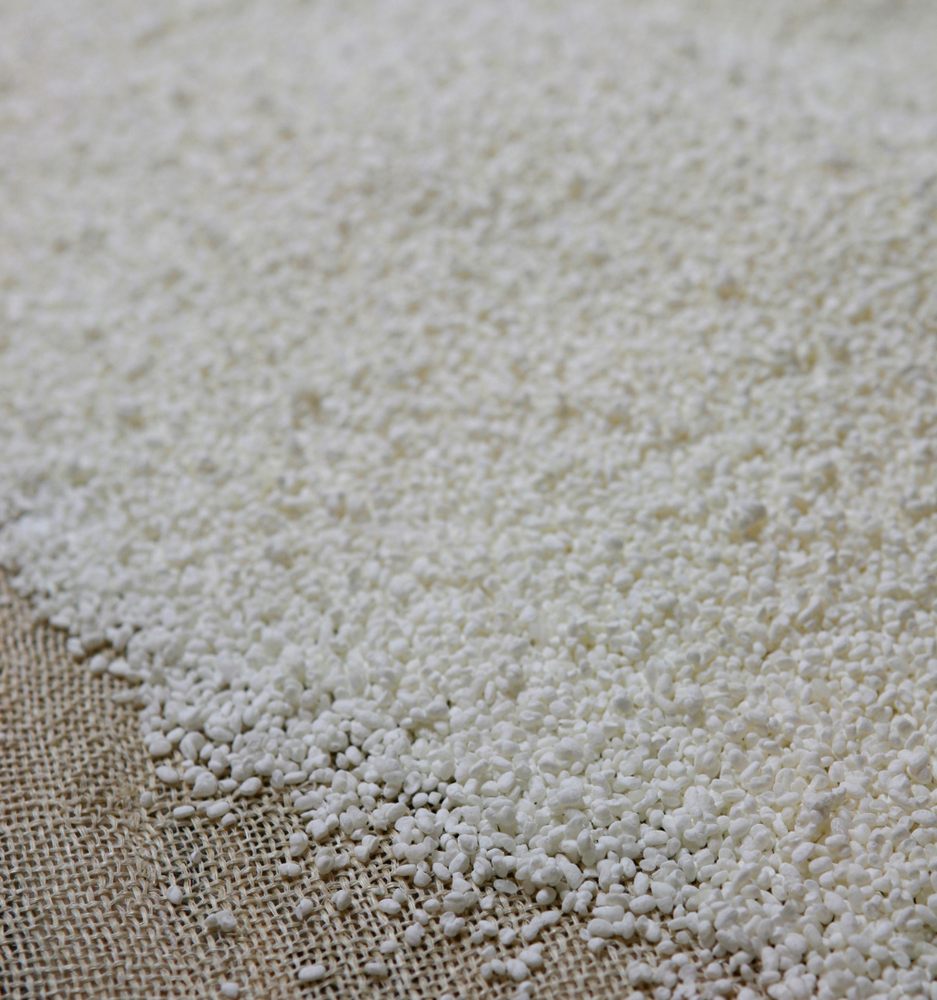From the Field, Resources for Roasters
Monday, October 24, 2022
The Latest on Koji Fermentation
When it comes to interesting fermentation methods, koji is the new kid on the block. Koji has been used for centuries in Asia to ferment rice, barley and other grains, but it’s new to coffee. We have a lot of questions about koji and how it affects fermentation: what is koji? Where does it come from and what does it do? What can we expect to see from koji-fermented coffees?

Recently, when Green Coffee Merchant with Sucafina Europe, Anička Marková, traveled to Colombia, she visited a farm that is experimenting with koji-fermented coffee. Anička has long been interested in unique fermentation methods and was thrilled to learn more about koji fermentation. She’s here to share the knowledge she’s learned and her passion for fermentation with you.
What is Koji?
Koji is Japan’s “national mold” and has been an important part of cuisine in Asian countries for generations. Typically, it’s used to ferment grains like rice, barley and soybeans. During the fermentation process, koji converts starch into sugar and also transforms the flavor and texture of the grain. Koji is the mold that’s typically used to turn soybeans into miso and wheat + soybeans into soy sauce. The main texture/flavor that koji helps bring out is umami, a savory deliciousness that gives koji-fermented things like soy sauce and miso a full flavor and hearty mouthfeel.
What Does It Do?
“Koji breaks down carbohydrates in the mucilage into more accessible sugars. Those sugars can then be consumed by other microorganisms and create new flavors,” Anička says. “More specifically, it’s taking starches that aren’t normally used during fermentation and transforming them into sugars and amino acids that can then be consumed by the typical microbes that consume sugars and produce unique flavor compounds. Many coffee professionals are looking for complexity in a coffee, and koji is a great way to achieve that.”
The effects of koji on fermenting coffee can be extremely varied, Anička says. “I think it really depends on the balance of koji to coffee, the mass of the bean, the variety, the microbiota in the fermentation already, and more. I was able to taste two different experiments, and they were completely different from each other.” The first was spicy with a floral and tea-like body. While the other was also floral, it had a heavier body and a nice, juicy acidity, Anička says.
Drawbacks
If koji is so fantastic at bringing out unique flavors and layered complexity, why isn’t everyone using it? There are a few reasons, Anička explains. First off, since koji fermentation involves extended fermentation, it affects the bean and the way it roasts. This can make roasting more difficult, though it’s such a new process that we’re still unsure exactly how it affects the bean and what that means for roasting techniques.
Second, we don’t totally understand the way koji fermentation impacts the green coffee bean. As a result, it might be hard to import and sell koji-fermented coffee in the European Union, Anička says. The EU has strict regulations about green coffee beans and how much foreign material can remain on beans imported there .
Additionally, in Europe and the Americas, koji hasn’t been used in cuisine very much, so there’s some concern among consumers about whether it is fit for human consumption. “People hear ‘fungus’ and they’re concerned about the impacts it may have on their health,” Anička says.
Koji in Practice
When Anička was in Colombia, she met with a farmer who was running tests with koji. Fermentation was happening in wooden tanks filled with water, she says. “They used aerators to circulate water and keep it oxygenated. The koji grew on the top of the fermentation tanks.” Anička was only at the farm for a few hours but in under 3 hours she could see the growing koji starts to form on the surface of the tank.
Anička sees great potential for koji-fermented coffees. You can create unique profiles and reduce the cost of fermentation. “The question is whether the coffee industry is ready for it. We do definitely need more tests about how koji affects the structure of the bean and impacts roasting, but we also need more communication about how incredible koji is and what it can do for the taste of coffee. We have to get over the consumer’s concern about a fungus touching their coffee.” At the same time, she notes, there are already many foods that Europeans and other markets consume that have mold on them including cheese and sausages, so the potential is there.
Interested in learning more about koji-fermented coffees or about purchasing some for your roastery? You can contact Anička with questions, or get in touch with your trader to express interest in koji-fermented coffees. We have a vast network of suppliers and relationships and can help you find the koji-fermented coffee of your dreams.